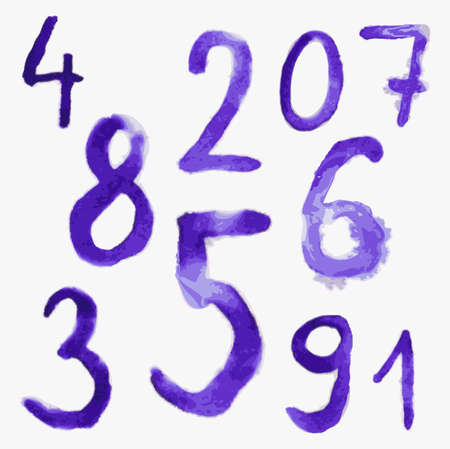Introduction to Kundali and Its Cultural Roots
In the vibrant tapestry of Indian culture, Kundali—commonly known as horoscope or Janam Kundli—holds a place of profound importance. Rooted in the ancient science of Vedic astrology, Kundali is much more than a celestial chart; it is a sacred blueprint that reflects the cosmic influence on an individual’s life journey. The practice of preparing and analysing a Kundali has been passed down through generations, forming an integral part of significant life events such as marriage, childbirth, and career decisions in Indian society. Across India’s diverse regions, the tradition of Kundali analysis is intricately woven with local beliefs, languages, and customs, making it both a personal and collective experience. By honouring these cultural roots, Kundali not only guides individuals but also connects them deeply to their heritage and community values.
Role of Local Language in Kundali Interpretation
In the intricate practice of Kundali analysis, the significance of interpreting horoscopes through one’s native language cannot be overstated. India is a land of linguistic diversity, with languages such as Hindi, Tamil, Bengali, Telugu, Kannada, Malayalam, and many others forming the very heartbeat of its communities. When an astrologer communicates Kundali readings in a person’s mother tongue, it not only enhances clarity but also fosters a deeper emotional connection. Let us explore how local language plays a crucial role in making Kundali readings more accurate and personally meaningful.
Accuracy Through Linguistic Nuance
The essence of astrology lies in decoding subtle planetary influences and life patterns unique to each individual. Translating astrological concepts into a native language allows for precise articulation of meanings that might otherwise be lost or diluted in translation. For instance, certain Sanskrit terms used in Kundali analysis have close parallels only in regional Indian languages and may lose their depth if rendered solely in English or another non-native tongue.
Emotional Resonance and Cultural Context
A reading delivered in one’s own language resonates more deeply because it is embedded with cultural references, idioms, and traditional wisdom familiar to the recipient. This emotional resonance helps seekers internalize guidance and apply remedies with greater faith and sincerity. It also enables astrologers to use region-specific metaphors or proverbs that evoke powerful imagery rooted in local traditions.
Impact of Native Language on Kundali Reading
| Language | Cultural Relevance | Communication Impact | Emotional Connection |
|---|---|---|---|
| Hindi | Widely spoken across North India; rich astrological vocabulary | Clear explanation of planetary yogas and doshas using familiar terms | Immediate trust and openness from seeker |
| Tamil | Deeply intertwined with Dravidian astrological heritage | Facilitates sharing ancestral rituals and remedies authentically | Sparks nostalgia and reverence for tradition |
| Bengali | Unique blend of Vedic and local folk beliefs | Allows nuanced discussion on karma and destiny as per Bengali culture | Cultivates spiritual comfort and belongingness |
| Other Regional Languages | Presents diverse perspectives; supports indigenous methods | Makes complex astrological ideas accessible to all generations | Strengthens family bonds through shared understanding |
Kundali interpretation thus becomes more than just a technical exercise—it transforms into a soulful conversation. By honoring the seeker’s linguistic identity, astrologers empower individuals to embrace their cosmic blueprint with confidence and hope, truly reflecting the spirit of India’s multicultural wisdom.

3. Cultural Nuances in Astrological Traditions
India is a land of immense cultural diversity, and this richness is vividly reflected in its astrological traditions. The way Kundali, or birth chart, is prepared, interpreted, and valued can differ significantly from one region to another, influenced by local rituals, customs, and religious beliefs. For example, in the South Indian states like Tamil Nadu and Kerala, the Panchangam—an ancient Hindu calendar—is often consulted alongside Kundali readings to ensure auspicious timings for ceremonies. Meanwhile, North Indian communities may emphasize specific doshas such as Manglik Dosha or focus on unique planetary combinations relevant to their regional practices.
Rituals surrounding Kundali analysis also vary widely. In Bengal, the ritual of ‘Namkaran’ (naming ceremony) often involves intricate Kundali matching and Vedic chanting led by family priests. In Gujarat and Maharashtra, it is common for families to consult astrologers during festivals like Navratri and Ganesh Chaturthi, seeking guidance based on personalized horoscopes. Even the format of the Kundali itself can change—North Indian charts are drawn in a square format (Chalit Chakra), while South Indian charts use a diamond-shaped layout. These subtle but meaningful differences highlight how local traditions breathe life into astrology across India.
The religious backdrop further enriches these practices. Hinduism’s myriad sects—Shaivism, Vaishnavism, Shaktism—each bring their own deities and rituals into astrological consultations. In Sikh communities of Punjab, though astrology is not emphasized religiously, cultural customs still encourage consulting astrologers before major life events. Similarly, among Jains and Buddhists, spiritual perspectives blend with astrological insights to guide decision-making. This tapestry of beliefs ensures that Kundali analysis is never a one-size-fits-all practice but rather an evolving tradition deeply intertwined with India’s regional identities.
4. Importance of Familial and Community Context
When it comes to Kundali analysis, the journey is never limited to just the individual. In Indian culture, ones horoscope or Janam Kundali is seen as a reflection of not only personal destiny but also of family lineage, community values, and ancestral blessings or karmic patterns. This deep interconnection between the self and the collective forms the backbone of Vedic astrology across India’s diverse regions.
The Role of Family Lineage in Kundali Analysis
In many Indian households, Kundali analysis is a tradition passed down through generations. The position of planets and stars at birth are believed to be influenced by the karma of ancestors. Thus, understanding one’s Kundali often involves examining patterns within the family tree, such as recurring yogas (planetary combinations), doshas (afflictions), or auspicious timings for major life events. These elements guide families in making decisions that honor both individual aspirations and collective heritage.
Social Values and Community Wisdom
Kundali reading varies widely across India due to differences in local customs, languages, and rituals. For example, a Kundali interpreted in Tamil Nadu might emphasize certain nakshatras (lunar constellations) or dashas (periods) differently than one in Punjab or Gujarat. This reflects how social values—like respect for elders, marriage traditions, or education priorities—shape interpretations. The community context ensures that guidance from Kundali readings aligns with what is respected and cherished locally.
Comparison Table: Individual vs. Familial & Community Focus in Kundali Analysis
| Aspect | Individual Focus | Familial & Community Focus |
|---|---|---|
| Interpretation | Personal strengths and weaknesses | Ancestral influences and family patterns |
| Decision Making | Career, health, relationships | Family welfare, marriage alliances, community reputation |
| Cultural Relevance | Universal astrological principles | Local customs, rituals, language nuances |
| Purpose | Self-development | Collective harmony and tradition preservation |
This holistic approach highlights that Kundali analysis in India is a dynamic interplay between individuality and belongingness. By embracing familial and community contexts—and interpreting horoscopes in local languages enriched with cultural symbolism—astrology becomes a source of healing wisdom for both the person and their larger social fabric.
5. Bridging Tradition with Modern Approaches
India’s rich spiritual legacy is woven into the very fabric of Kundali analysis. However, as we move into a digital era, there is a growing need to blend ancient wisdom with modern technology—without losing the soul of tradition. One of the biggest challenges in this journey is ensuring that the sacred elements of local language and cultural nuances remain intact even when Kundali readings are conducted via online platforms or mobile apps.
Challenges in Integration
Integrating traditional Kundali methods with contemporary tools often brings about concerns of authenticity and depth. Many digital platforms may offer quick horoscope calculations but lack the subtle understanding of regional dialects, idioms, and rituals that make Kundali reading so personal for every community—be it in Tamil Nadu, Maharashtra, West Bengal, or Punjab. This disconnect can result in generic interpretations that miss the essence of an individual’s cultural background.
The Importance of Cultural Sensitivity
When using digital tools for Kundali analysis, it is vital to maintain cultural sensitivity. This means not only providing multi-language support but also adapting interfaces to reflect traditional customs, festivals, and beliefs relevant to each region. For example, auspicious timings (muhurat), specific doshas, and remedies can differ greatly across states and must be respected in any digital representation.
Opportunities for Authentic Connection
On the positive side, technology opens up opportunities for wider access to authentic astrologers from different linguistic backgrounds. Digital platforms can bridge geographical distances and connect people with practitioners who understand their mother tongue and local traditions—strengthening trust in astrological guidance. By incorporating video consultations or interactive chat features in regional languages, platforms can honour both the personal touch and spiritual depth required for true Kundali analysis.
In conclusion, while modern approaches bring speed and convenience, they must work hand-in-hand with cultural wisdom. The future of Kundali analysis lies in respecting local languages and traditions even as we embrace digital innovation—ensuring every seeker feels seen, understood, and uplifted on their cosmic journey.
6. Conclusion: Preserving Authenticity in Kundali Practice
In the dynamic landscape of modern India, where globalization and technological advancement are rapidly shaping daily life, the continued use of local languages and cultural traditions within Kundali analysis stands as a beacon of authenticity. The unique expressions, regional idioms, and traditional rituals embedded in one’s mother tongue not only enhance the accuracy of astrological interpretations but also ensure that the guidance provided is deeply personal and contextually relevant. By honouring local customs—whether it is through the recitation of mantras in native dialects or aligning remedies with indigenous festivals—astrologers connect seekers with their ancestral wisdom and spiritual roots.
This practice nurtures a sense of belonging and trust, as individuals feel truly seen and understood within their own cultural framework. It is this deep connection that empowers Kundali analysis to go beyond mere prediction, transforming it into a healing journey of self-discovery and alignment. As we embrace innovation, let us also preserve the sanctity of our traditions, ensuring that Kundali reading remains meaningful for generations to come. The harmonious blend of ancient wisdom and cultural nuances continues to be the heart and soul of effective astrology in contemporary India.

